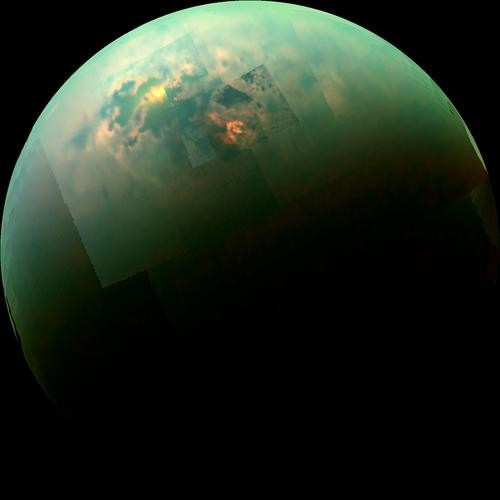It seems like in the whole solar system, the most similar object to Earth is not a planet but Saturn moon's Titan that also has rivers and oceans including a thick atmosphere and rocky composition. Now, scientists have discovered that Titan also possesses polar winds like Earth's that can reel in gases from its atmosphere outwards to space.
Titan is Saturn's largest moon and also the first known body in the solar system to possess a similar, uncanny polar wind. Detecting this wind is NASA's Cassini probe that has been in Saturn's orbit since 2004 where it gathered data from Titan's atmosphere and magnetic tail during a period of 23 flybys.
With the orbiter's instrument called the Cassini's Plasma Spectrometer (CAPS), it measured charged particles flying around in its atmosphere.
According to lead author of the study Andrew Coates from the University College London Mullard Space Science Laboratory, nitrogen and methane are the main components of Titan's atmosphere and it also possesses 50 percent higher pressure on its surface as opposed to Earth.
He also adds that CAPS data also revealed that the top layer of Titan's atmosphere is shedding several tons of hydrocarbons and nitriles per day where the cause is still unknown however this new study explains how this is happening.
Researchers believe that this evidence is manifested with electrons charged at a precise 24.1 electron volts that may have been charged from light. Coats explains that even if Titan is 10 times more distant than our planet, its upper atmosphere is still coated in sunlight.
The light molecules then interacts with Titan's ionosphere where it emits negatively charged electrons from hydrocarbon and nitrile molecules that produces positively charged particles.
Researchers also say that these electrons are drifted along with Saturn's magnetic field that it generates their own electrical field that is powerful enough to reel in positively charged particles out of its atmosphere.
Similar on Earth, this same phenomenon also charges the particles in the atmosphere and attracts them to the planet's magnetic field, emanating from the poles.
Scientists believe Titan is the only other object in the solar system with the same characteristics however they also suggest that this can also occur on Mars and Venus. This study is published in the journal Geophysical Research Letters.



























